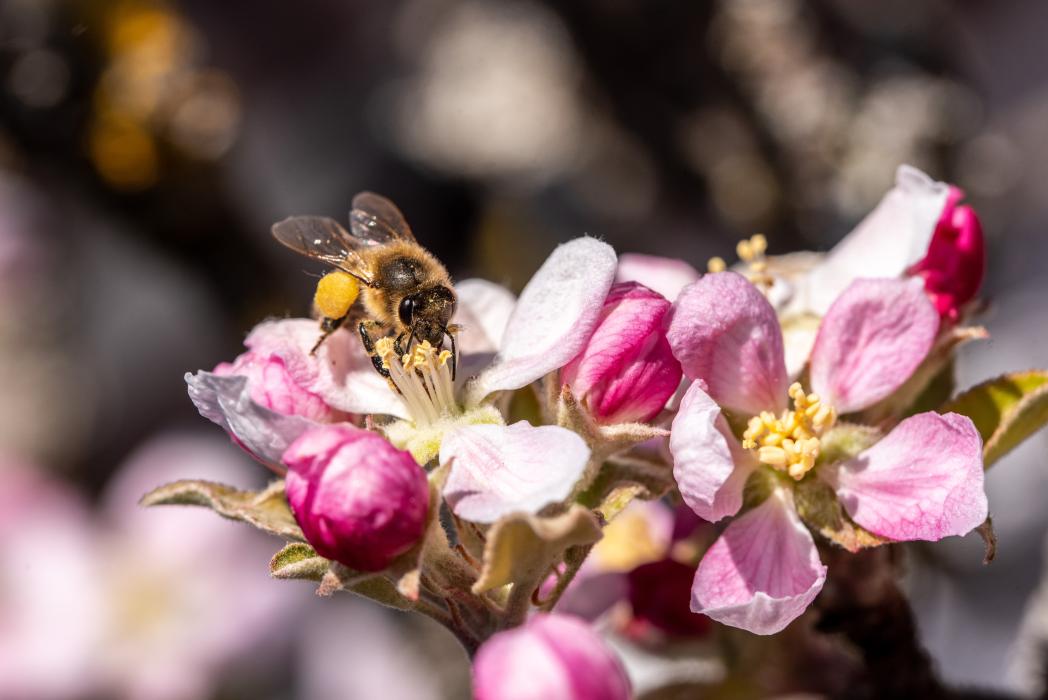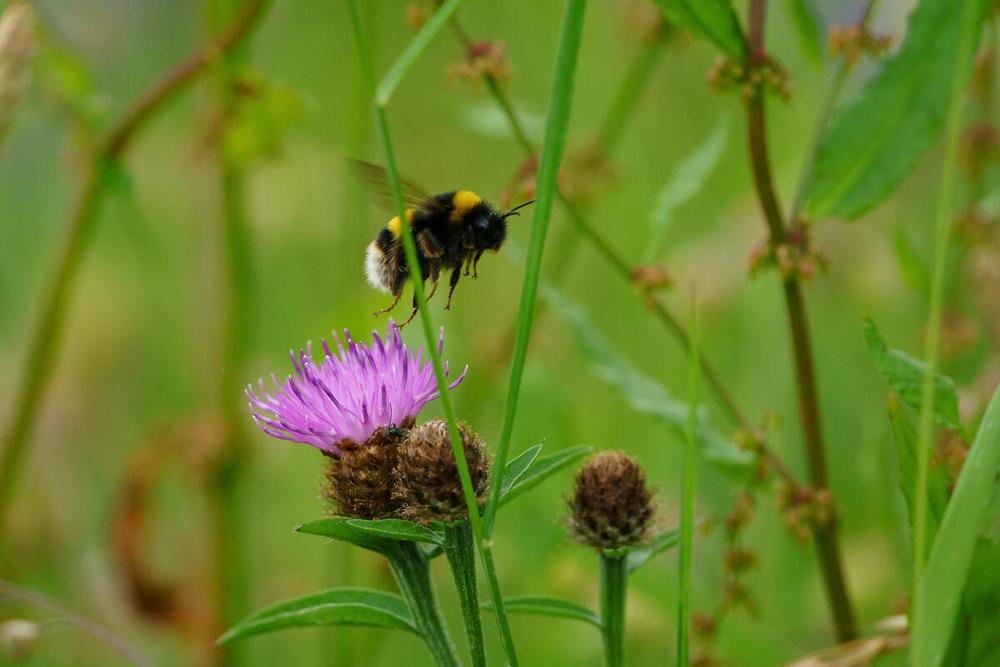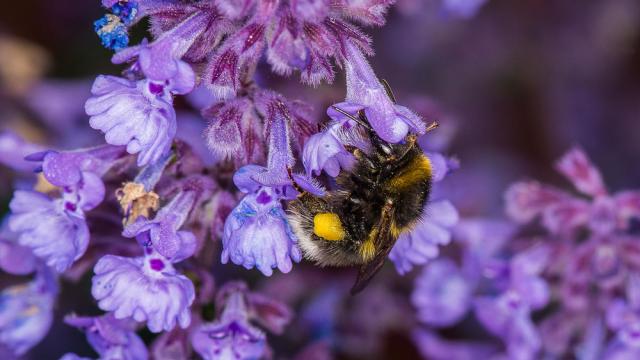Why do bees matter?
The UK is one of the world’s most nature-depleted countries.[1] And one group that’s being significantly affected is insects, among which are bees.
Bees play a vital role in pollinating plants that other species depend on for survival. Without them, whole ecosystems would change or cease to exist. They also pollinate crops, contributing to the world’s food yields.

Why do bees need help?
Despite their importance, bees are in trouble. Across Europe, 37% of bee species are in decline.[2] A 2019 study by WWF and Buglife found that in the east of England, 17 species of bee had become regionally extinct, and a further 25 were threatened with extinction.[3]
Not all bees need help. In the UK, one species of bee – the western honeybee – produces honey, and is looked after (or ‘farmed’) by beekeepers. Honeybees do face problems, but they have someone looking after them, which makes life much easier. But the other 274 species of bee in the UK (and around 20,000 species around the world)[4] do need help.
The main risks to bees in the UK are the loss of food (flowers and plants that provide nectar and pollen) and habitat, as well as climate change, pesticides, and invasive species. In the UK, between 1930 and 1984, 97% of wildflower meadows were lost.[5] Many bees nest in soil, sand, bricks, dead wood, trees, and even in piles of leaves, but today gardens are being replaced with artificial lawns, concrete and tarmac.[6]

Five ways we can help bees
- Grow flowers. Even if space is limited, every little helps! Growing a variety of ‘pollinator-friendly’ flowers and plants that flower at different times throughout the year will help provide food for different species. A good option is wildflowers, as they are low maintenance, spread easily and are good for lots of different insects including bees. We recommend using the RHS ‘plants for pollinators’ list,[7] or the Bumblebee Conservation Trust’s gardening guide.[8]
- Provide habitat – leave a patch for bees. Find a small space where you can let grass grow long and allow dandelions to spread. If possible, you could leave a small patch of bare dirt that will stay warm and sunny, an old log pile, or piles of leaves in the winter. Or all of these options!
- Say no to pesticides. Pesticides are harmful to insects, they’re designed to kill pests! This also includes other products like fungicides, chemical fertilisers and weed killers. Although you may think you’re just killing a weed, spraying a flower that bees and other insects visit will poison them and potentially other bees and insects they meet. Chemicals from these products will also leach into the soil and poison other organisms below ground.
- Support insect conservation charities that work to protect bees and other pollinators. These include the Bumblebee Conservation Trust, Buglife and Butterfly Conservation. There are many ways to support these organisations, not just financially. For example, the Bumblebee Conservation Trust asks for volunteers to carry out ‘Bee Walks’, which involve walking a regular route once a month and counting bumblebee species you see.
- Avoid bee-washing. This is when businesses try to sell products or services claiming they will ‘save bees’, with no basis in science.[9] For example, buying honey doesn’t necessarily save bees unless a company is planting a wildflower meadow for wild bees with the proceeds. Another example is ‘bee hotels’, which can do more harm than good owing to the build-up of parasites if they are not properly cleaned and stored from year to year. You can find a guide to looking after a bee hotel on the Bumblebee Conservation Trust website.[10] When buying products ‘for bees’, always check what scientific conservation organisations recommend first.
Sources
[1] Natural History Museum (2023) Biodiversity Intactness Index https://www.nhm.ac.uk/our-science/data/biodiversity-indicators/biodiversity-intactness-index-data
[2] IPBES (2016) The assessment report on pollinators, pollination and food production https://www.ipbes.net/sites/default/files/spm_deliverable_3a_pollination_20170222.pdf
[3] Jackson, L (2019) East of England Bee Report: A report on the status of threatened bees in the region with recommendations for conservation action https://www.wwf.org.uk/sites/default/files/2019-05/EofE%20bee%20report%202019%20FINAL_17MAY2019.pdf
[4] Falk, SJ (2016) Field guide to the bees of Great Britain and Ireland. British Wildlife Publishing
[5] Fuller, RM (1987) The changing extent and conservation interest of lowland grasslands in England and Wales: a review of grassland surveys 1930–1984 https://doi.org/10.1016/0006-3207(87)90121-2
[6] Aviva (2022) Gardens being uprooted in favour of driveways and artificial grass, new research reveals. https://www.aviva.com/newsroom/news-releases/2022/07/gardens-being-uprooted-in-favour-of-driveways-and-artificial-grass-new-research-reveals/
[7] https://www.rhs.org.uk/science/research/plants-for-pollinators
[8] https://www.bumblebeeconservation.org/gardening/
[9] Wiseman, et al (2025) https://link.springer.com/article/10.1007/s10841-024-00641-9
[10] https://www.bumblebeeconservation.org/a-brief-guide-to-solitary-bee-nest-boxes/

